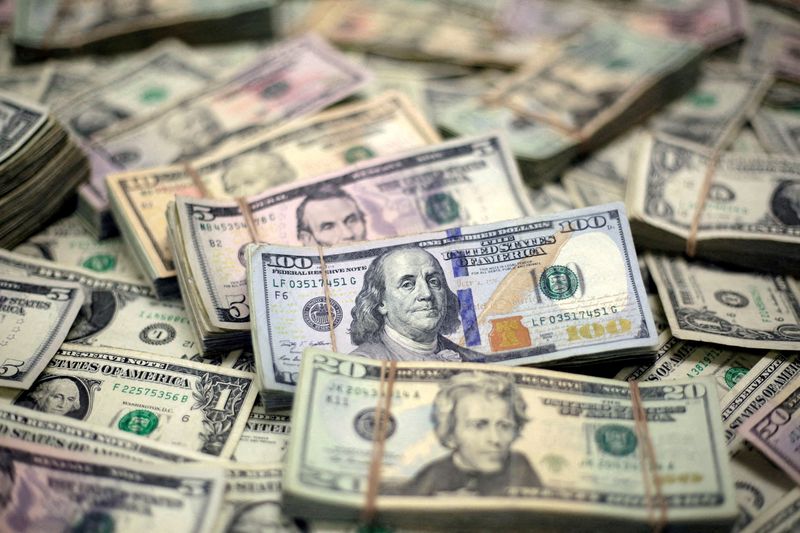By Alden Bentley and Medha Singh
NEW YORK/LONDON (Reuters) – The dollar held steady at a seven-week high against the major currencies on Tuesday as investors assessed prospects for further U.S. interest rate cuts amid concerns about the Middle East conflict and lending by the Chinese economy.
The US data calendar is relatively light this week, but investors will be looking for trading signals from Wednesday’s release of the minutes of the September Federal Reserve meeting, when officials almost unanimously agreed to cut rates by 50 basis points, as well as the consumer price index of Thursday, September. report.
The euro rose 0.05% to $1.0979, still close to last week’s seven-week low of $1.09515. The pound rose 0.17% to $1.3104, after hitting a three-week low of $1.30595 on Monday.
Traders have shifted their expectations for monetary easing this year from the US Federal Reserve. A strong jobs report last week confirmed comments from Fed Chairman Jerome Powell that the central bank would stick with its usual quarter-percentage-point rate cuts after starting its easing cycle with September’s big rate cut.
Federal Reserve Bank of New York President John Williams, a permanent voice on the Fed’s rate-setting committee, echoed Powell’s comments, telling the Financial Times in an interview Tuesday that he did not consider the September measure as the rule for how we act in the future”.
Markets are estimating about a 90% chance of a 25 basis point cut in November, the CME FedWatch tool showed, and some are now betting on no rate cut at all. Only 50 basis points of easing was priced in in December, compared to more than 70 basis points a week earlier.
That has helped push the currency to multi-week highs against the euro, sterling and yen. However, the yen recovered some of its losses on Tuesday as rising geopolitical concerns led investors to flee to safe-haven assets.
The , which measures the U.S. currency against major rivals, fell 0.3% to 102.45.
“If Thursday’s CPI update is soft enough, it could ultimately help calm the Fed doves’ nerves and prevent the US dollar from falling into the medium-term bullish consolidation zone against many majors,” says Ipek Ozkardeskaya, senior analyst at Swissquote Bank.
“If not, the price reduction could take off without November, and that would mean higher rates, a stronger US dollar across the board, weaker other currencies and some negative pressure on stock valuations.”
The benchmark remained above 4% after hitting the level for the first time in two months on Monday as traders limited their bets on major rate cuts. [US/]
Meanwhile, rates fell against the dollar, while stock markets returned with a strong opening after a weeklong holiday break but ended well below their highs as a lack of details dented optimism around stimulus measures.
“That huge rally that we saw for Chinese stocks and the yuan has more or less come to a standstill this morning. So risk sentiment is not super great today,” said Helen Given, associate director of trading at Monex (US) in Washington. direct current. “That’s why the yen has risen slightly against the dollar, but most other G10 currencies are relatively flat.”

The dollar/yen fell 0.07% to 148.07, after falling to a seven-week low of 149.10 on Monday on concerns the Bank of Japan would raise interest rates in the near term.
In other currency pairs, the dollar rose to its highest since August 19 against the Canadian dollar and was last up 0.27% at C$1.3653. The Australian dollar fell 0.46% to US$0.6725, its lowest since September 16.


